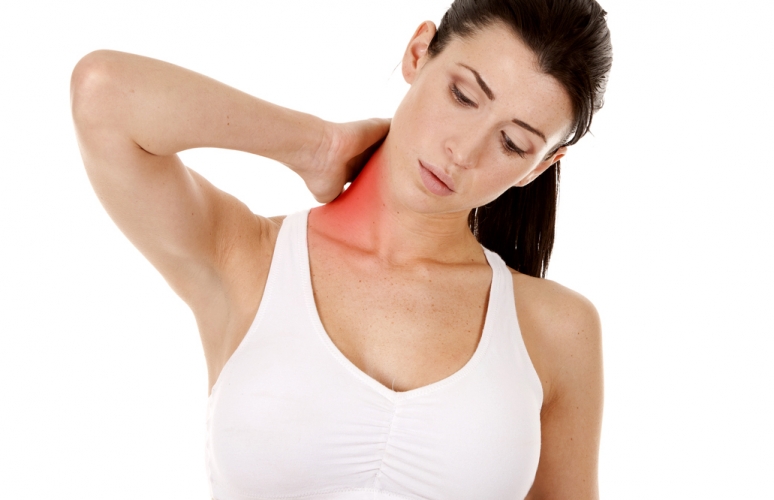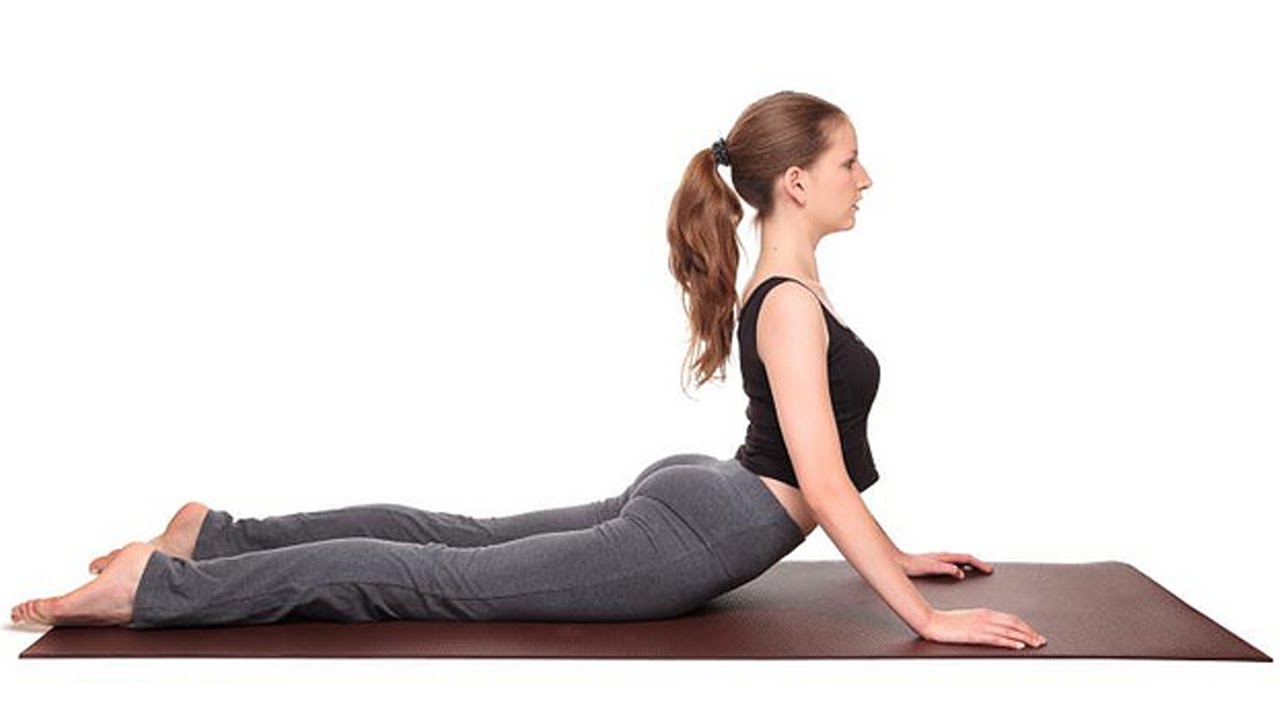Your neck is a complex interlocking structure consisting of bones, joints, nerves, muscles, tendons and ligaments. Neck pain or a stiff neck can result from a sprain after bending your neck into an abnormal position (for example, by sleeping on too many pillows, acute torticollis), from poor posture, or even from sitting in a draught for too long. Sometimes, neck pain may be caused by the general ‘wear and tear’ that occurs on the joints and bones in your neck. This is called cervical spondylosis, and is a type of arthritis.

If you have a neck pain, your first task is to learn to re-establish a normal curve in as many situations as possible: sitting at your desk, standing in line at the grocery store, lying in bed.
Symptoms of neck pain
|
Asanas to Heal Neck Pain
As you practice these asanas, see that you pull your shoulder blades away from your ears and do not to compress the back of your neck.
Bhujangasana (Cobra Pose)
This Yoga Pose improves spinal flexibility and strengthens the muscles in the arms and back. In addition, it is effective in relieving menstrual irregularities and constipation.

- Lie prone on the floor. Stretch your legs back, tops of the feet on the floor. Spread your hands on the floor under your shoulders. Hug the elbows back into your body.
- Press the tops of the feet and thighs and the pubis firmly into the floor.
- On an inhalation, begin to straighten the arms to lift the chest off the floor, going only to the height at which you can maintain a connection through your pubis to your legs. Press the tailbone toward the pubis and lift the pubis toward the navel. Narrow the hip points. Firm but don’t harden the buttocks.
- Firm the shoulder blades against the back, puffing the side ribs forward. Lift through the top of the sternum but avoid pushing the front ribs forward, which only hardens the lower back. Distribute the backbend evenly throughout the entire spine.
- Hold the pose anywhere from 15 to 30 seconds, breathing easily. Release back to the floor with an exhalation.
Salabhasana (Locust Pose)
This is an exceptional posture in that it requires a sudden movement. It is like the cobra posture but raising the feet instead of the head. It can therefore be used, occasionally only, instead of the cobra.
- Lie on your front. Rest your chin on the ground, then move it forward as much as you can, so that your throat lies almost flat. Put your arms by your sides, then push your hands under your body, and make them into fists or clasp them together. Bring your elbows as close together as possible.
- Inhale as you lift one leg. Hold this position for at least 10 seconds, then exhale while lowering your leg and repeat the pose with your other leg. Practice it 3 times on each side. Chin position: The further forward you push your chin, the more your spine can stretch and the more you will gain from this asana.
- Lie with your chin out, as in the Half Locust, then take 3 deep breaths. On the third, lift both legs off the ground. They may not come up far at first, but with practice you may be able to lift them much higher. Hold for as long as you can, then lower your feet. Repeat twice and then relax.
- Up and Up: With practice, you will be able to raise your legs higher. Eventually, you may even be able to lift your body vertically.
Balasana (The Child’s Pose)
Child’s pose is a comforting, peaceful asana. Staying in this position is not only relaxing, but also promotes a feeling of safety and security. The stretch involved to the lower back and arms also feels wonderful!
- Kneel on the floor, and then sit directly onto your heels.
- Shift your knees until they are a little more than hip-width apart.
- Bend forward at the hip; bring your chest to rest between your thighs.
- Keep your buttocks in contact with your heels and rest your forehead on the floor. If this is uncomfortable, rest your forehead on a cushion or folded blanket-make sure it is high enough for you to be comfortable.
- Stretch your arms out in front of you on either side of your head. Lengthen the muscles as far as you can, really give a good stretch! Then slide your arms back to your sides, palms up and relax.
- Remain in this pose for as long as possible. Breathe deeply and relax into the posture.
Bitilasana (Cow Pose)
- Come into all fours/horse stance/ table top position
- Hips over the knees parallel to each other; wrists over the shoulder in line; head in neutral position; eyes look down
- Inhale, lift the seat bones and chest up; belly sinks down the floor; lift the head and eyes look up; drop the shoulders down away from ears to protect your neck
- Exhale, come back to neutral position
- Repeat 1-3 minutes
Tip: If you have a neck problem, keep the head in line with the torso instead of lifting it.
Marjaryasana (Cat Pose)
- Come into all fours or horse stance with the hands and knees are on the floor.
- Inhale, then exhale, drawing the abs in and slowly arching your back up.
- Gently tuck your tail bone under and hang your head between your arms
- Breathe deeply
These yoga poses can help relieve your symptoms in a natural, non-invasive and gentle manner in the privacy and convenience of your own home.